May 2 — June 9, 2024
D.D.D.D, New York, New York


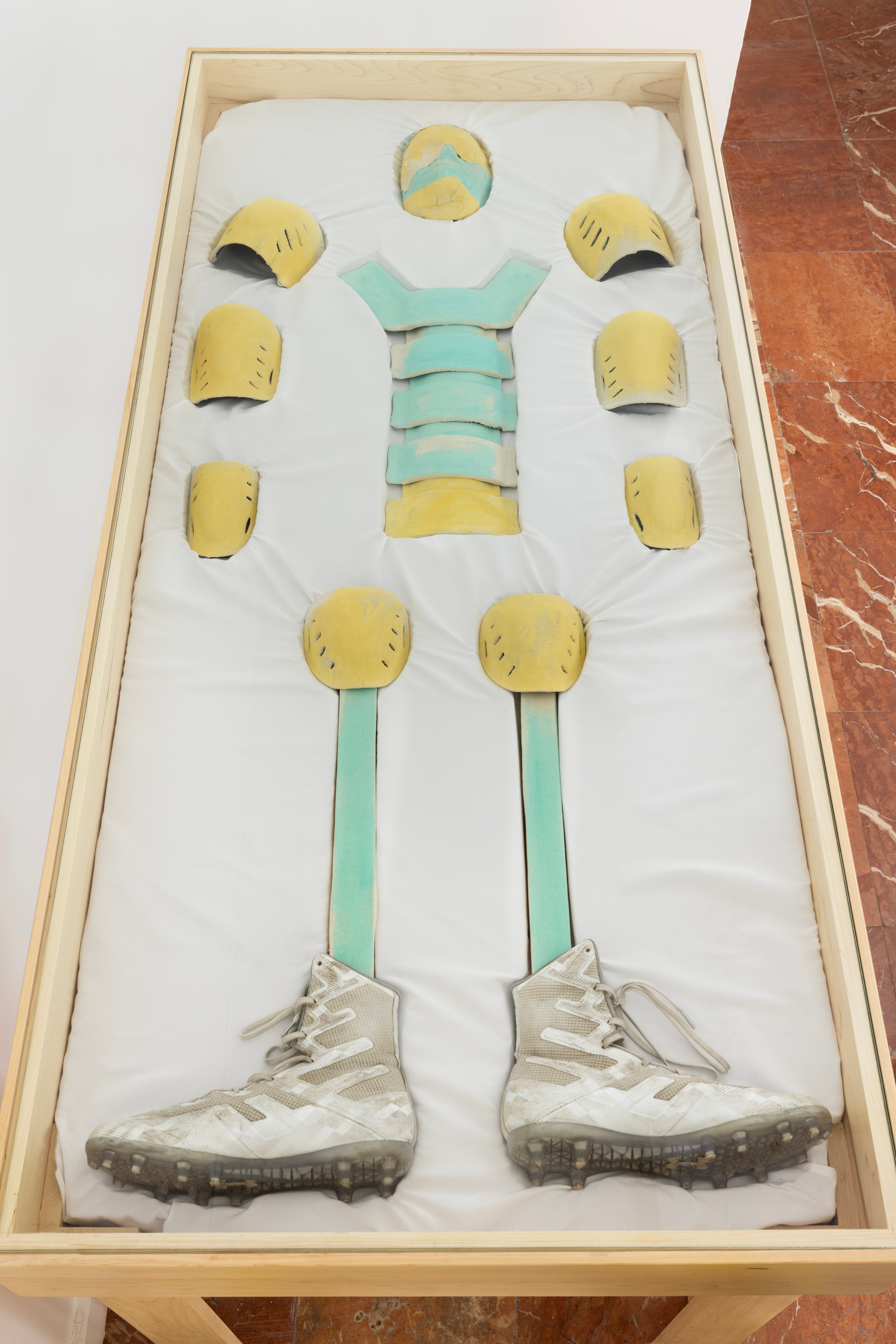
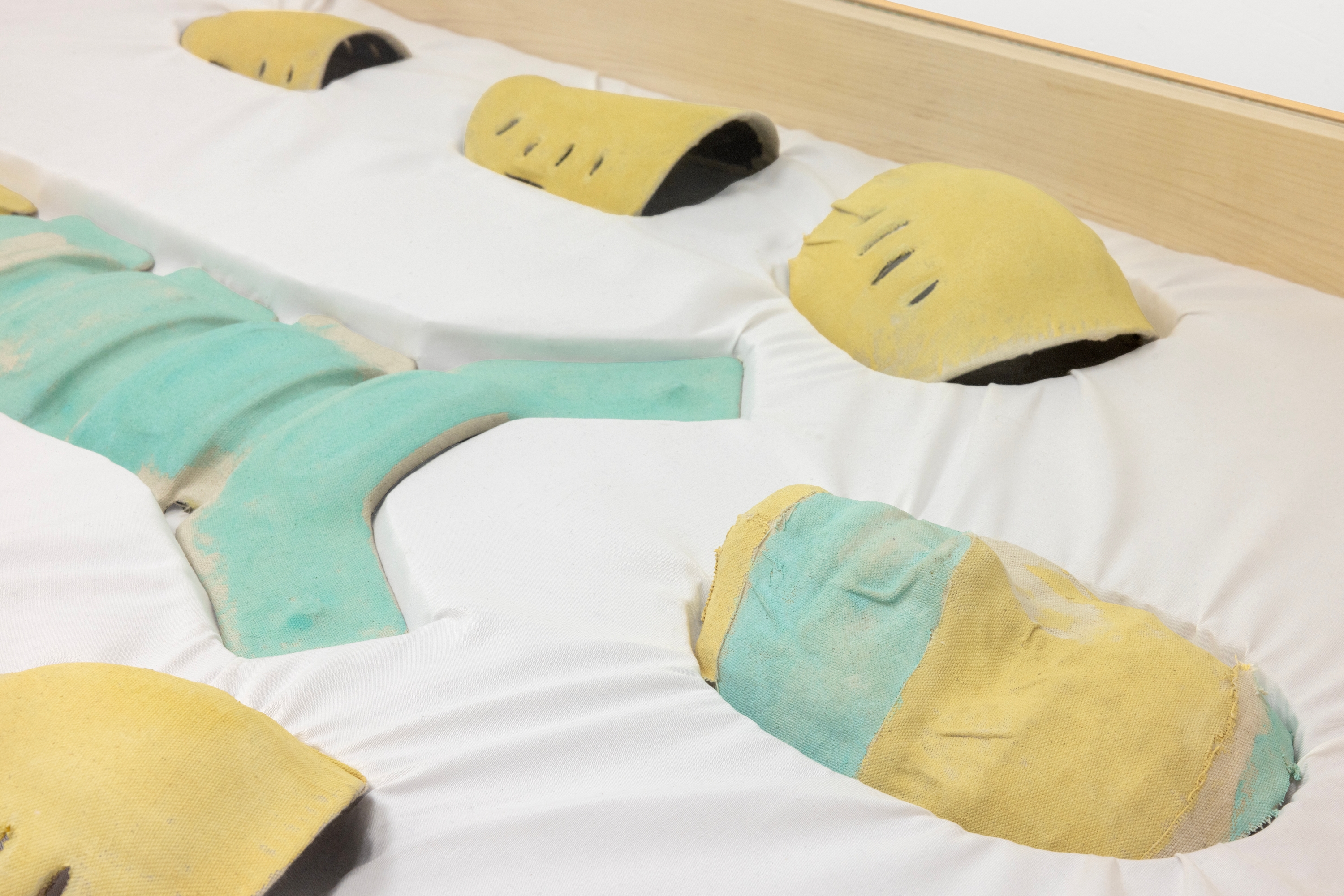
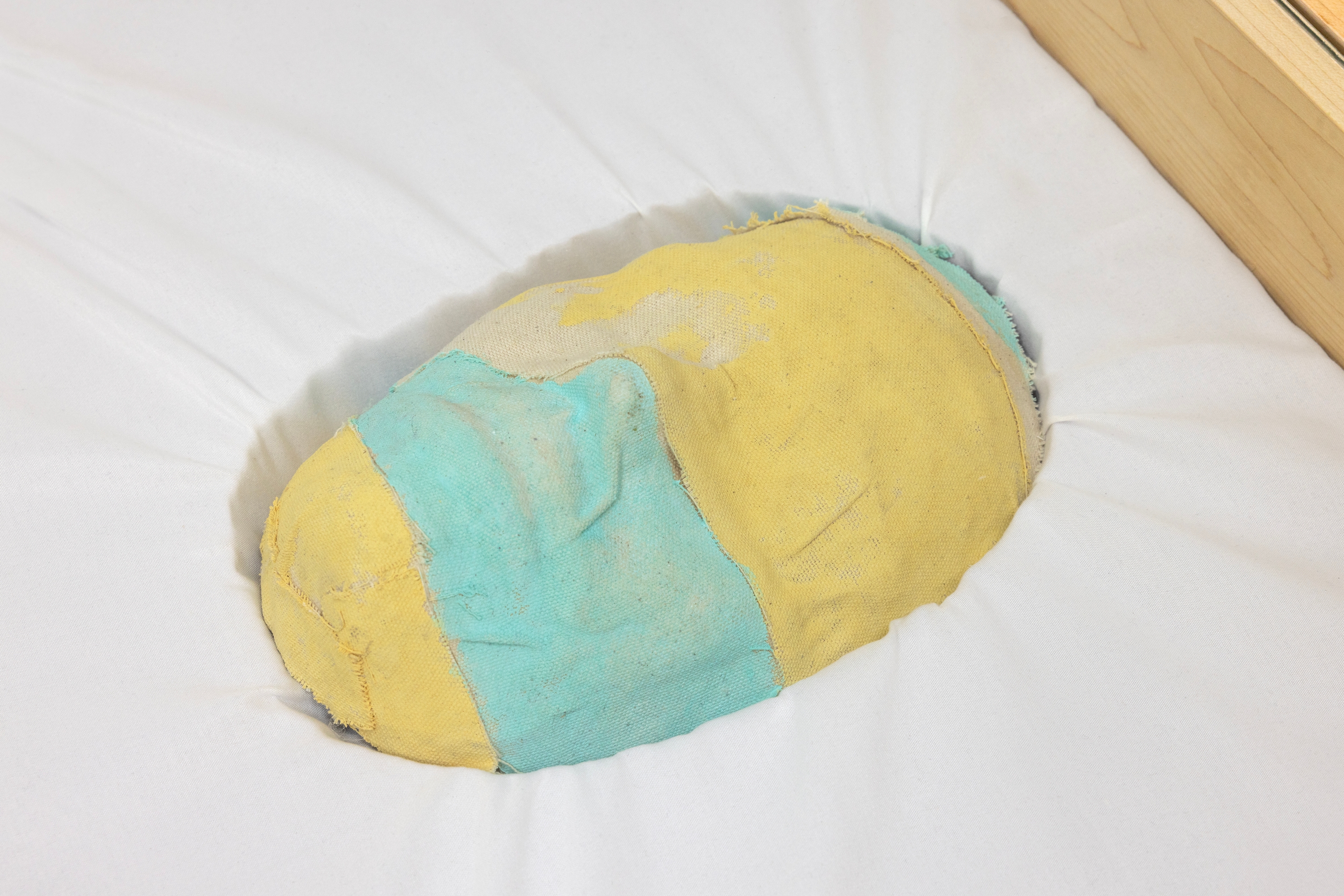
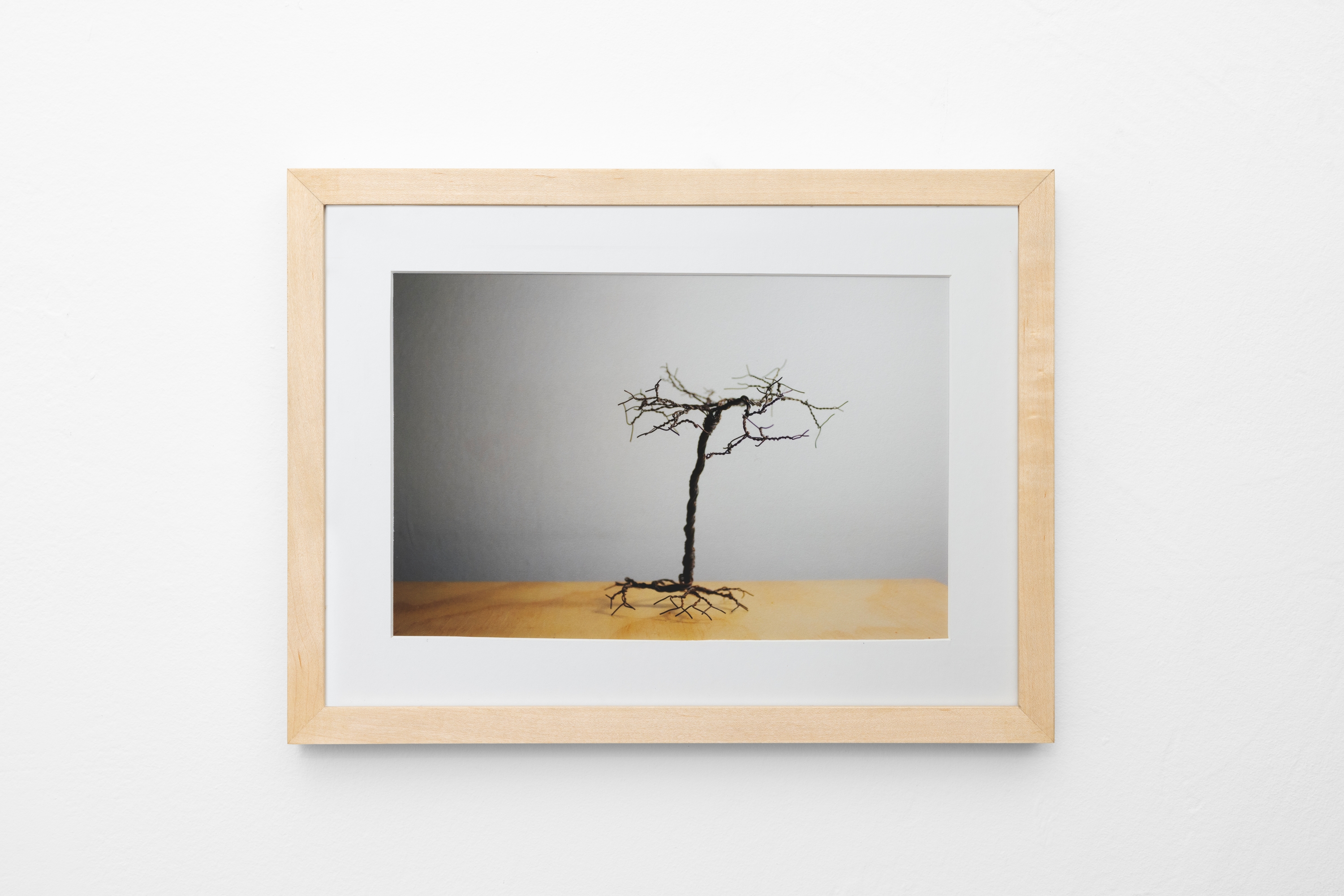
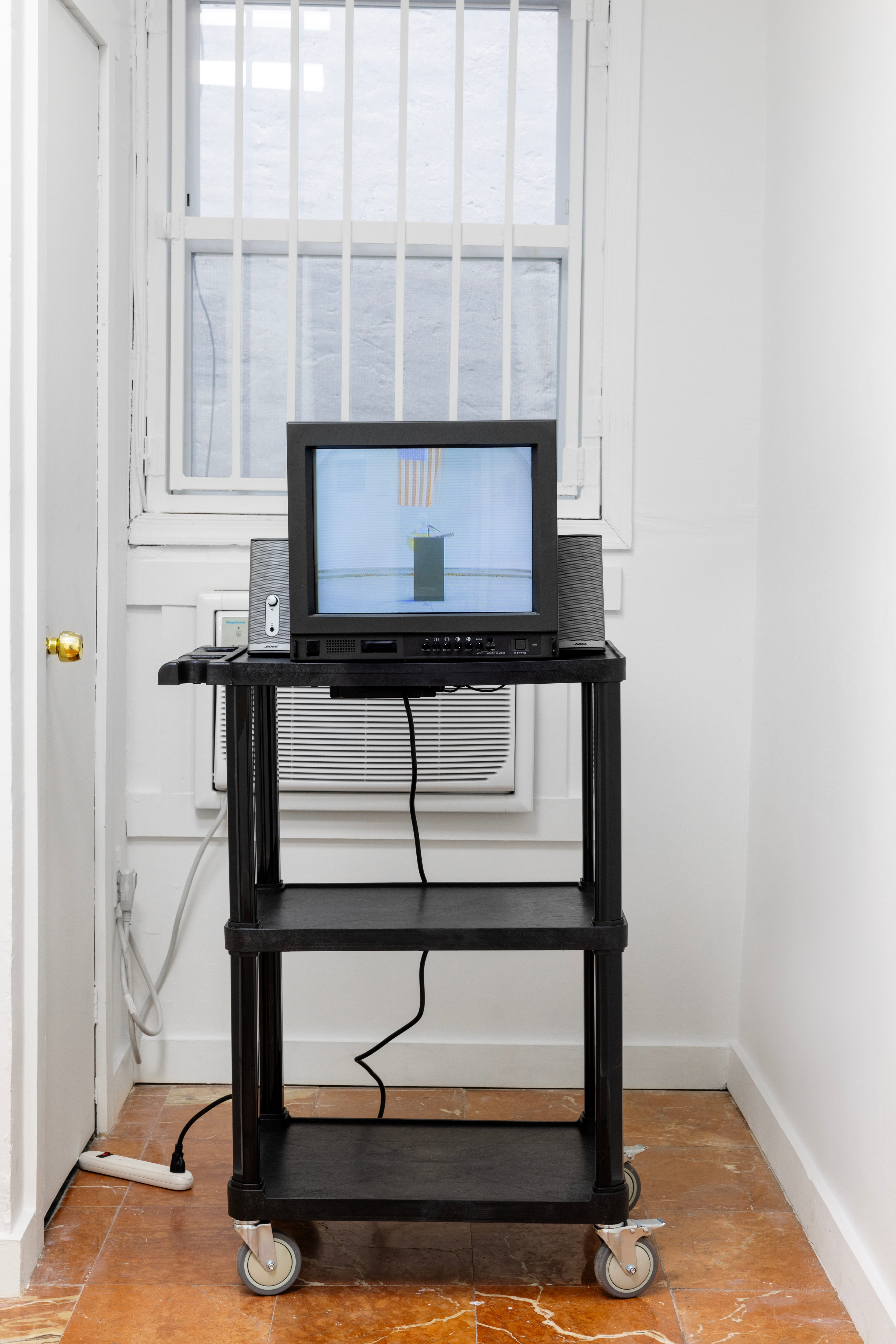
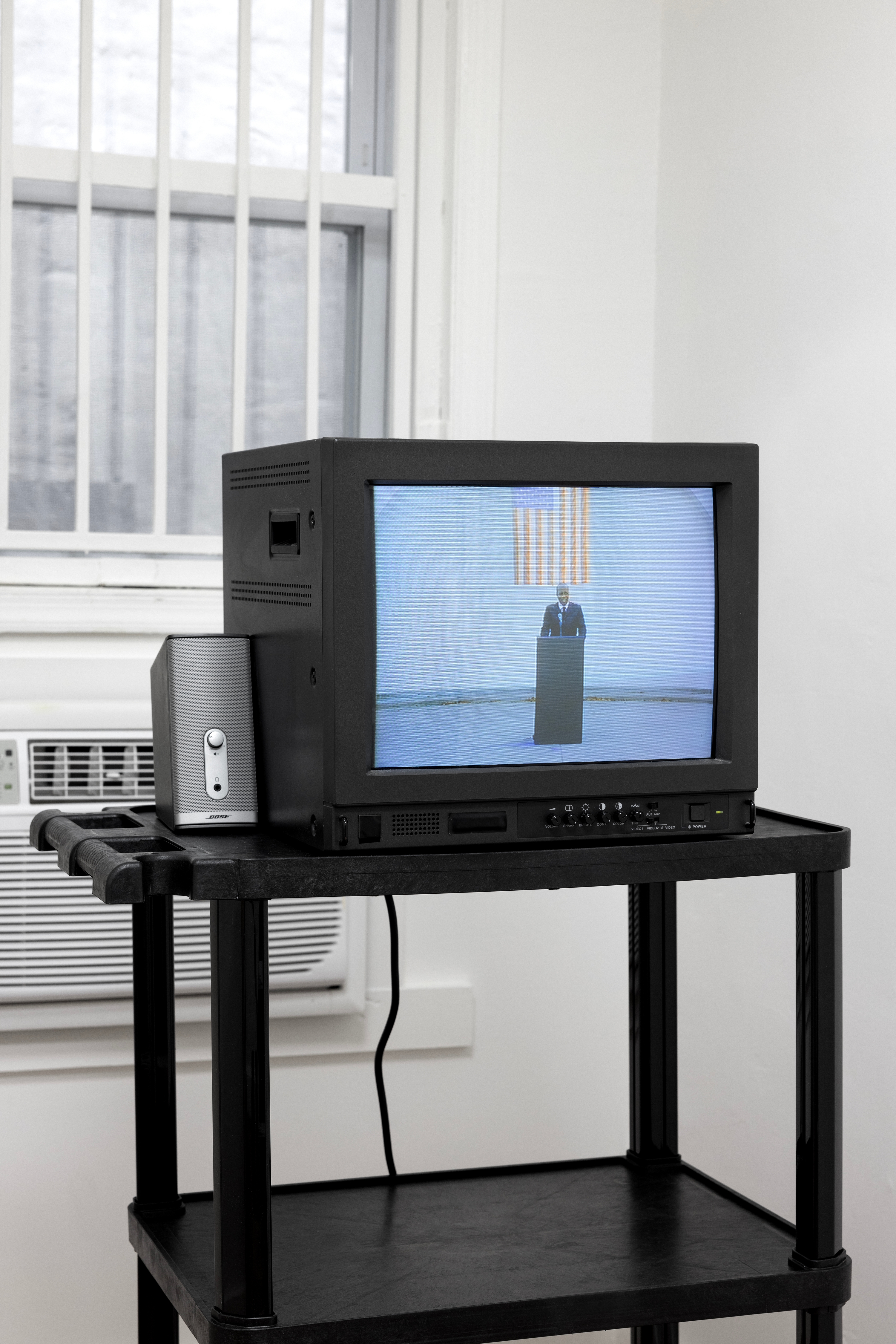
What is the metric for art goals? In Resignation, instead of speaking directly of the feelings of dejection, exhaustion, and hopelessness which are a separate genre in art, Samson Stilwell constructs a stand-in for the aesthetic retiree, combining visuals of sports and politics, where cherished positions are timed to age, election cycle, and youthful agility.
In the center, an archeological vitrine with the armor of a powerless superhero, an all-American show of brute force displayed as if seen from a historical distance. One can imagine a scholar scribbling down her translations of a long-forgotten language of desperate fortitude that recites the backlog of what, thanks to being in the past, looks like failure. An open air stage in the park, where the Mayor reads his farewell poem and invites that superhero for an eulogy. A folk song about homecoming. A tree made of wire, an image that might allude to the omnipresence and multifariousness of electricity and leads me toward an underlying question of a more general kind. Is art a particle or a wave? And if it’s either of those or both, how and when does it ever end?
The complex answer is that if art is a particle, then the field is composed of discrete points, like individual stars in the sky. If it is a wave, then art is a continuous event, and no artist should, in the words of John Ashberry, expect a fate “exemplary, like a star.” The simple answer is that all visuals are ‘content’ now, transmitted and approved electronically, with comic book superhero lore acting as the blueprint for the mechanics of relentless content dissemination. Therefore, while offline art is usually made of particles, it is more often seen through waves of screen radiation. This situation accelerates the difference between the value of an artistic gesture and the value of its content versions. It also complicates the notion of achievement. The success of an offline piece does not guarantee effective dissemination through the networks. Stopping production offline might not synchronize with a shutdown of online activities, and vice versa.
Stilwell allows for every eventuality of this sort. While Resignation might read as an ironic wake for oversized ambition, it also looks for ways of art making that combine crawls in the Internet’s sparsely visited corners with a deconstruction of persistent heroic myths. A superhero, symbol of effortless cultural visibility, performs a song that has 78 views on YouTube. A politician waxes poetic, bringing the effusiveness of verse to the media-saturated event of leaving office: “Around us, joyless sleep would gather. Doubts of whether we were doing what we wanted or if what we wanted was any good to want at all.” By contrasting infusions of weak media (generic folk song, poem) with strong media (comic books, politics), Stilwell closes the rift between the immovable object and the content stream, thus making sure that the art goals are never truly met.
- Valentine Diaconov